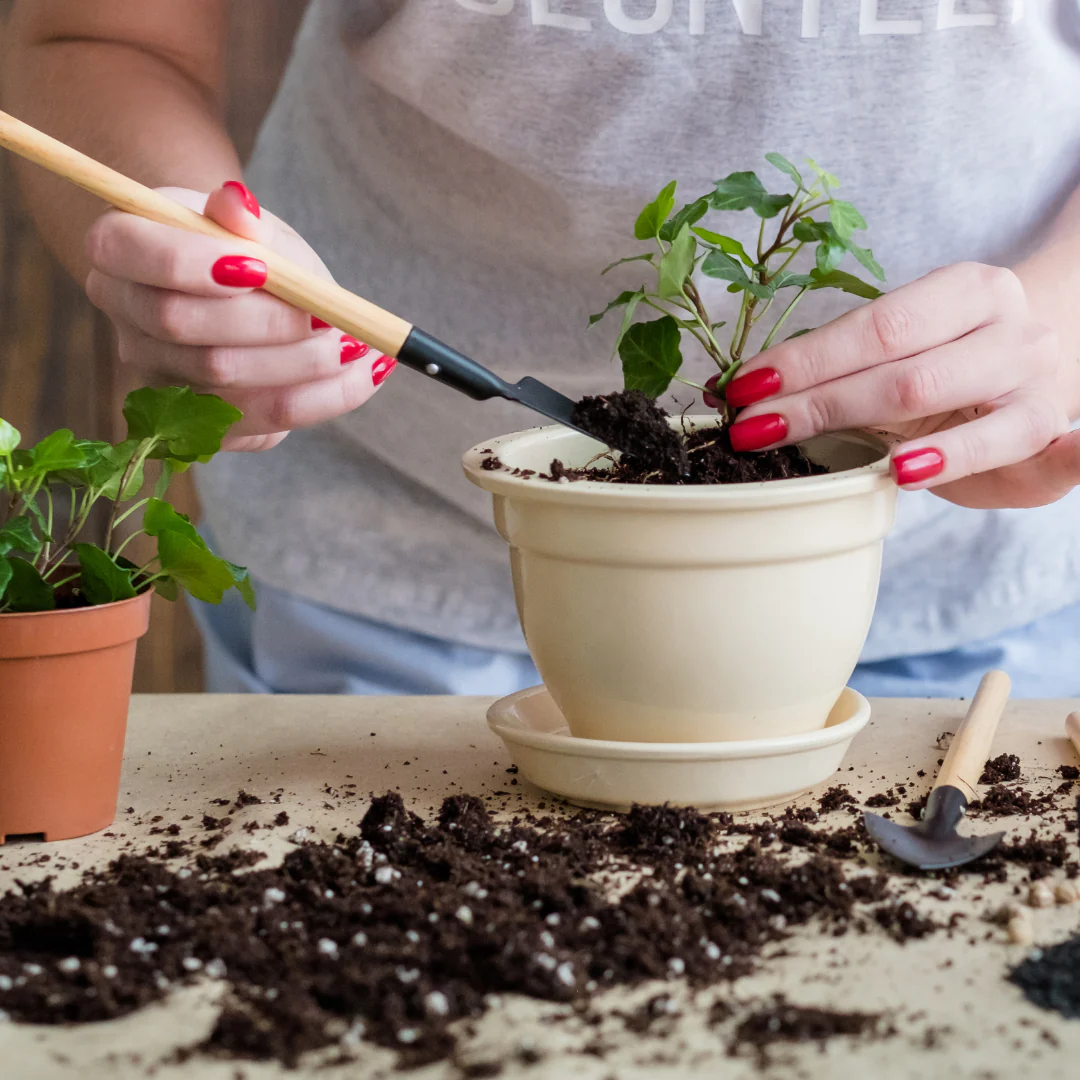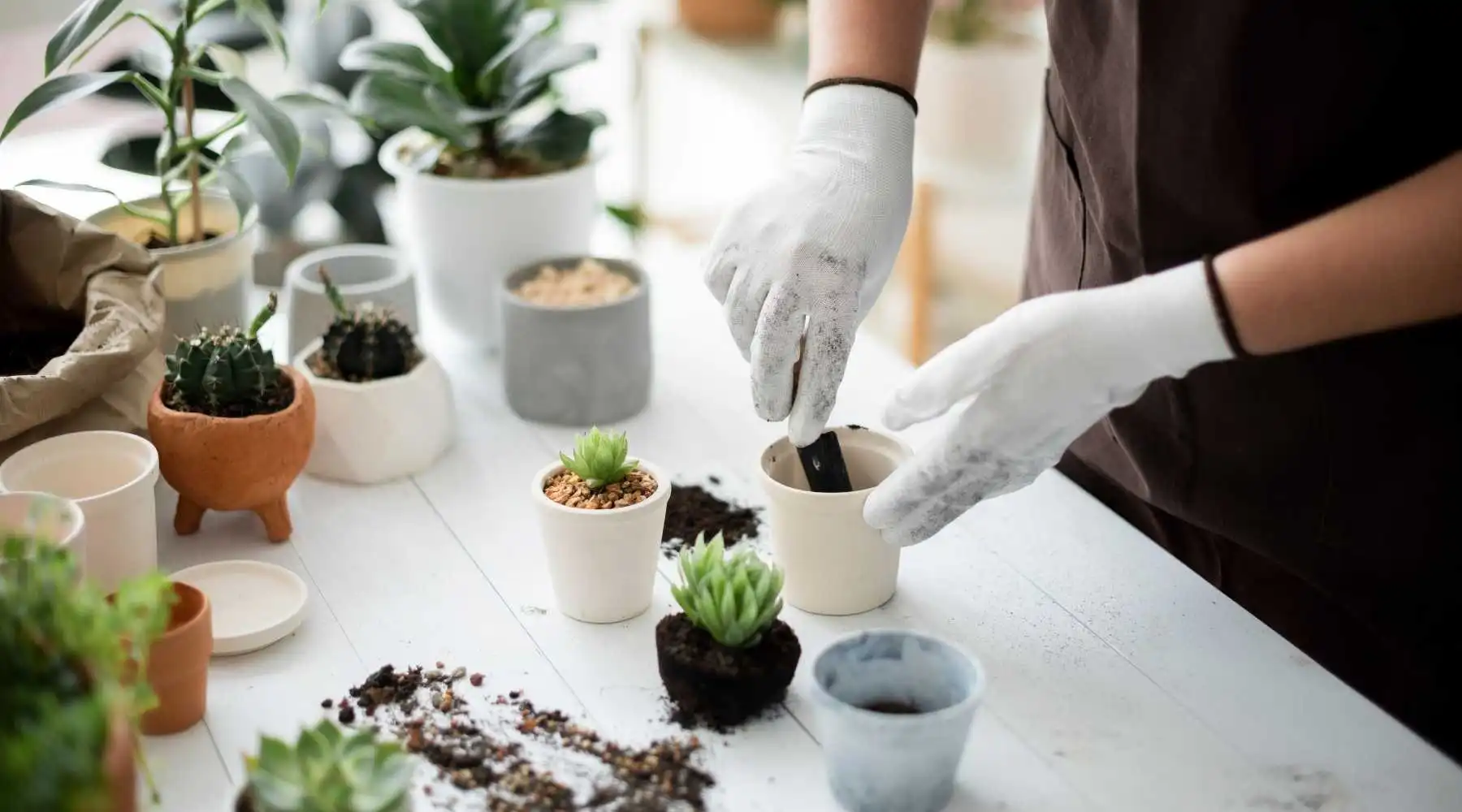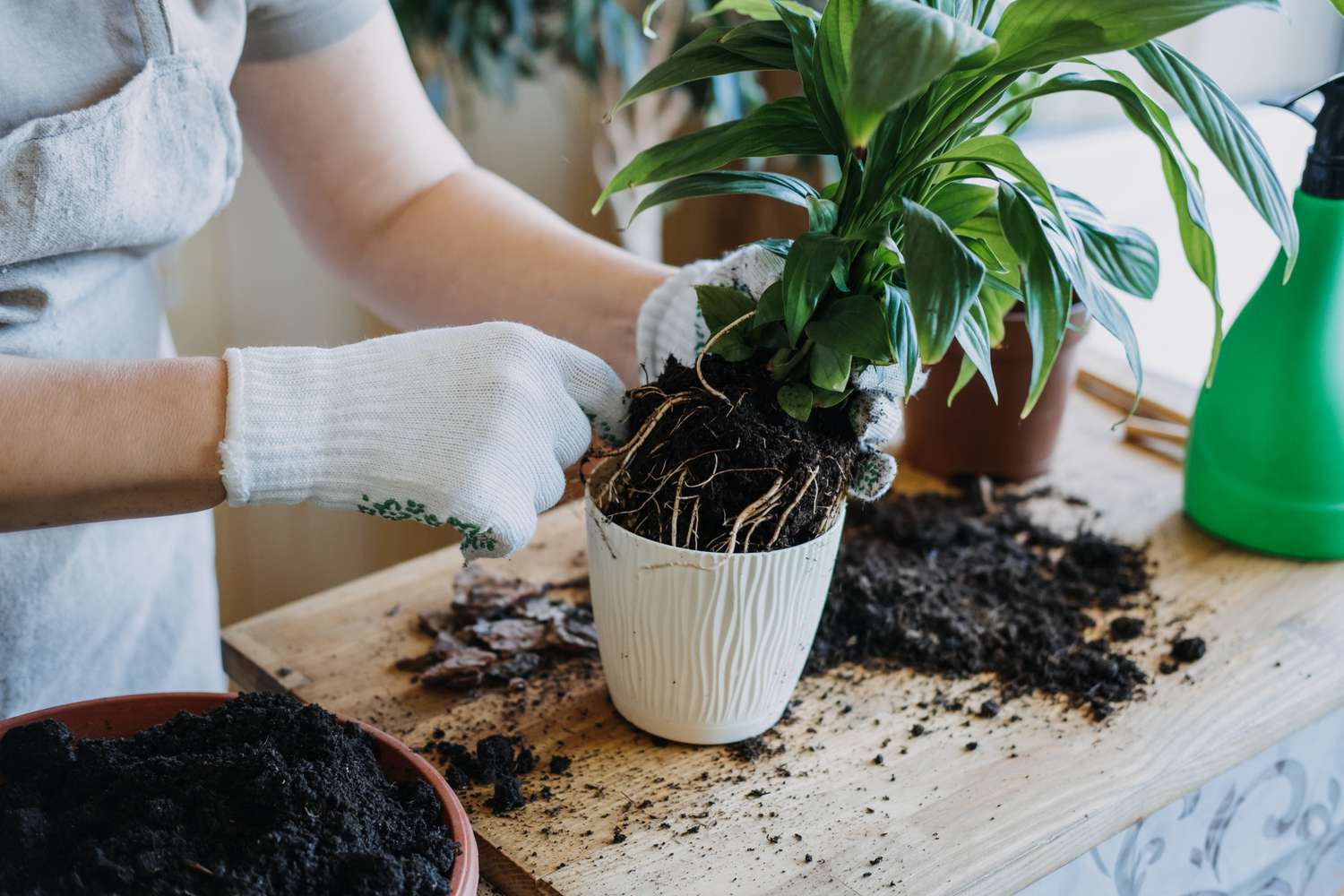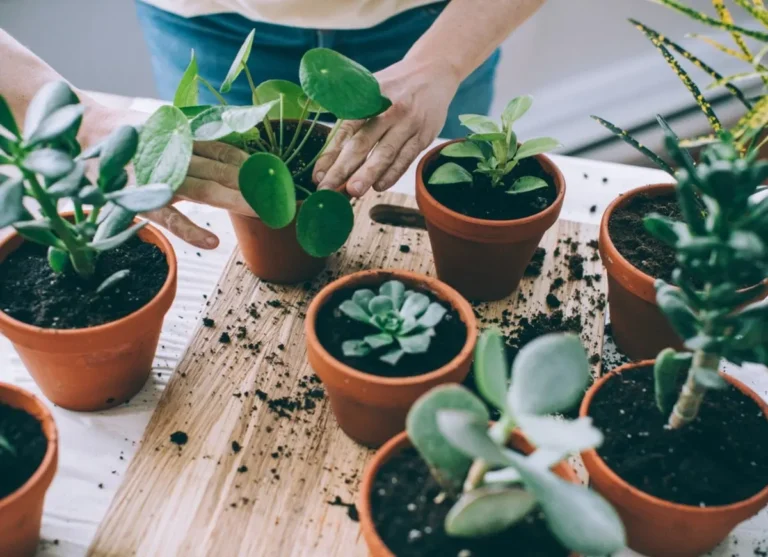Contents
Introduction
Ever wondered how to turn one plant into many without spending a fortune at the garden center? Welcome to the world of plant propagation! It’s a fun, satisfying way to grow new plants from your existing favorites. Whether you’re a seasoned green thumb or just starting out, mastering propagation can help you multiply your plants, save money, and even share your leafy friends with others.
So, what exactly is plant propagation? Simply put, it’s the process of creating new plants from parts of existing ones. Think of it as nature’s way of cloning—without any high-tech gadgets! Instead of buying new plants, you can grow them yourself from seeds, cuttings, or other plant parts. It’s like magic, but with soil and sunshine.
Why should you care about propagation? For starters, it’s a cost-effective way to expand your garden. Imagine filling your garden beds with gorgeous blooms or lush greenery without breaking the bank. Plus, it’s a great way to keep your favorite plant varieties thriving and even grow some that might be hard to find in stores.
In this guide, we’ll walk you through the basics of plant propagation. We’ll cover various methods like sowing seeds, taking cuttings, and more. No need to worry about getting too technical; we’ll keep things simple and straightforward. By the end of this guide, you’ll have all the knowledge you need to start growing new plants with ease and confidence.
Ready to dive in and turn your single plant into a whole garden? Let’s get started!
Understanding Plant Propagation
Alright, let’s get down to the basics of plant propagation. It sounds fancy, but it’s really just a cool way to grow more plants from what you already have. Understanding the different methods and what affects their success can make your plant-growing journey a whole lot easier.

Types of Propagation
First up, let’s talk about the two main ways you can propagate plants: sexual and asexual.
- Sexual Propagation: This is the method where you use seeds to grow new plants. It’s like starting from scratch, but it’s a great way to grow plants if you’re looking to start fresh or try new varieties. You plant seeds, they germinate, and eventually, you get new plants. It’s nature’s way of mixing things up and creating new life!
- Asexual Propagation: This one’s all about cloning. Instead of starting from seeds, you grow new plants from parts of existing ones—like leaves, stems, or roots. Think of it like making a copy of your favorite plant. It’s often easier and quicker, especially if you’re trying to replicate a plant that’s already thriving in your home.
Factors Affecting Propagation Success
Not every plant is easy to propagate, and not every method works for every plant. Here’s what you need to keep in mind:
- Plant Type: Some plants are super easy to propagate, while others are a bit finicky. Understanding your plant’s needs and propagation quirks can help you get the best results.
- Growth Conditions: Plants need the right environment to thrive. For propagation, this means providing the right amount of light, moisture, and temperature. Think of it like creating a little paradise for your plants to grow in.
- Tools and Supplies: You don’t need a lot of fancy gear, but having the right tools can make a big difference. Basic supplies include pots, soil, and rooting hormones. These little helpers can give your plants a boost and increase your chances of success.
Understanding these basics will set you up for success as you start experimenting with different propagation methods. It’s like having the right ingredients before you start cooking—a little knowledge goes a long way!
Common Propagation Methods
Alright, now that you’ve got the basics down, let’s dive into the fun part: the different ways you can propagate your plants. There are several methods you can use, each with its own set of steps and benefits. Don’t worry—we’ll break it all down so you can pick the one that’s right for your plants.
Seed Propagation
Starting with seeds is like the classic way to grow new plants. It’s straightforward and rewarding, especially if you love watching something grow from the very beginning.

- Choosing the Right Seeds: Not all seeds are created equal. Make sure you pick seeds that are suited to your growing conditions and climate. Some seeds need specific temperatures or soil types, so a little research can go a long way.
- Seed Sowing Techniques: Once you’ve got your seeds, it’s time to plant them. You can sow them directly into pots or garden beds. Just make sure you’re following the recommended depth and spacing for each type of seed.
- Germination and Care: Seeds need the right environment to sprout. This usually means keeping them warm, moist, and in the right light. Once they’ve germinated, you’ll need to care for them by watering regularly and providing enough light.
Cuttings
If you want to propagate without starting from seeds, cuttings are a great option. It’s like taking a snippet of your plant and encouraging it to grow roots and become a new plant.
- Selecting the Right Cutting: Choose a healthy part of the plant to cut—usually a stem or leaf. Make sure it’s free of disease and pests.
- Rooting Hormones: These are magical powders or liquids that help encourage roots to grow from your cutting. They’re not always necessary, but they can give your cuttings a boost.
- Potting and Care: Place your cuttings in pots with good soil and keep them in a warm, bright spot. Make sure the soil stays moist but not soggy, and in a few weeks, you should see roots starting to develop.
Division
Division is a super handy method for plants that grow in clumps or clusters. It’s like splitting a big plant into smaller sections to create new plants.
- When to Divide Plants: Look for signs like overcrowding or reduced blooming. Dividing is usually best done in the spring or fall, depending on the plant.
- How to Divide: Gently separate the plant into smaller sections, making sure each section has roots and stems. Replant these sections into new pots or garden beds.
- Post-Division Care: After dividing, give your new plants a bit of extra care to help them settle in. Keep them well-watered and in a spot with good light.
Layering
Layering is a bit like cloning a plant in place. You bury part of the plant to encourage it to grow roots while still attached to the parent plant.
- Types of Layering: There are several types, including simple layering (burying a stem) and air layering (covering a part of the stem with soil or moss). Each method works a bit differently but has the same goal: growing roots from a part of the plant.
- Steps for Successful Layering: For simple layering, bend a stem to the ground and cover it with soil. For air layering, wrap a section of the stem with moist moss and plastic. Once roots develop, you can cut it away from the parent plant.
- Care for Layered Plants: Keep the soil or moss moist and provide the right light. Once the new plant has strong roots, you can separate it from the parent plant and transplant it.
Grafting and Budding
Grafting and budding are advanced techniques where you join parts of different plants together. This is often used for fruit trees and other specialized plants.
- Understanding Grafting and Budding: Grafting involves joining a piece of one plant (the scion) with another plant (the rootstock). Budding is similar but involves inserting a bud rather than a whole stem.
- Choosing Scions and Rootstocks: Select healthy, compatible plants for grafting. The scion should be a variety you want to grow, while the rootstock should be strong and suitable for your climate.
- Techniques for Grafting and Budding: Follow specific techniques for each method, like cutting and joining the plant parts securely. It might take a little practice, but the results can be impressive.
By experimenting with these methods, you’ll find the best ways to propagate your favorite plants and watch your garden flourish. Each technique offers its own set of benefits, so don’t be afraid to try them all!
Troubleshooting Common Issues
Even with the best intentions and practices, sometimes things don’t go as planned with plant propagation. Don’t sweat it—every gardener runs into hiccups now and then. Let’s walk through some common issues you might encounter and how to fix them, so you can get back to growing healthy, thriving plants.
Problems with Germination
So, you’ve sown your seeds and are eagerly awaiting little green sprouts, but nothing is happening. What’s up with that?
- Common Causes: There are a few things that can go wrong with seed germination. It might be the wrong temperature, too little moisture, or seeds that are past their prime.
- Solutions: Make sure you’re sowing your seeds at the right depth and temperature. Check the seed packet for specific requirements. Keep the soil consistently moist but not waterlogged. If seeds still won’t germinate, try starting with fresh seeds.
Root Rot and Disease
Root rot is a sneaky issue that can quickly destroy your newly propagated plants. It usually happens when the soil is too wet and not draining properly.

- Identifying the Problem: Look for signs like yellowing leaves, a soggy smell, or mushy roots. These are red flags that something’s wrong.
- Solutions: To prevent root rot, ensure you’re using well-draining soil and pots with drainage holes. If you spot rot, gently remove the affected roots and re-pot the plant in fresh, dry soil. Also, avoid overwatering—let the soil dry out between waterings.
Pest Control
Newly propagated plants can attract pests like aphids, spider mites, or gnats. These little critters can be a big hassle, but they’re manageable.
- Common Pests: Look out for tiny insects, webbing, or yellowing leaves, which can indicate pest problems.
- Solutions: Use natural remedies like neem oil or insecticidal soap to treat pests. Regularly check your plants for signs of pests and act quickly to control any infestations. Keeping your plants clean and healthy can also help prevent pests from moving in.
Environmental Factors
Sometimes, it’s not the plant or the method—it’s the environment that’s causing trouble. Plants are pretty sensitive to their surroundings.
- Temperature and Light: Plants have specific needs for light and temperature. Too much or too little of either can cause problems. Make sure your plants are getting the right amount of light and that they’re in a temperature range they can handle.
- Solutions: Adjust the lighting conditions by moving your plants to a brighter or shadier spot as needed. Use a thermometer to monitor the temperature and make adjustments to keep it within the ideal range for your plant species.
By staying vigilant and addressing these common issues, you’ll improve your chances of successful propagation and keep your plants happy and healthy. Remember, every problem has a solution, and with a bit of patience and care, you’ll be well on your way to growing a thriving garden!
Tips for Successful Propagation
Ready to take your plant propagation skills to the next level? With a few handy tips and tricks, you can boost your success rate and enjoy a thriving garden full of new plants. Let’s dive into some practical advice that’ll help you get the best results from your propagation efforts.
Record-Keeping
One of the best ways to improve your plant propagation is to keep track of what you’re doing. It might sound a bit nerdy, but trust me—it’s super helpful!
- Why Record-Keeping Matters: Keeping notes helps you remember what methods worked, what didn’t, and what conditions your plants preferred. It’s like having a gardening journal where you can look back and see your progress.
- What to Record: Jot down details like the type of plant, propagation method used, dates, and any special care instructions. You can also note any problems and how you fixed them. This way, you’ll build a personalized guide to help you in the future.
Patience and Persistence
Propagation isn’t always instant. Sometimes, plants need time to develop roots, grow, and adjust to their new environment.
- The Importance of Patience: New plants might take weeks or even months to show significant growth. It’s all part of the process. Remember, plants don’t grow overnight, and a little patience can make a big difference.
- Staying Persistent: Don’t get discouraged if things don’t work out perfectly the first time. Keep experimenting with different methods and techniques. Sometimes it takes a few tries to get things just right.
Learning from Experience
Every propagation attempt is a learning experience. Whether things go smoothly or you run into a few bumps, there’s always something new to discover.
- Reflect on Your Successes: When you have a successful propagation, take a moment to celebrate and reflect on what worked. Did you use a new method or tweak your care routine? Understanding what led to success can help you replicate it in the future.
- Learn from Mistakes: It’s normal to encounter challenges along the way. Use these moments as learning opportunities. Think about what went wrong and how you can adjust your approach next time.
Additional Resources
If you’re looking to dive even deeper into plant propagation, there are plenty of resources out there to help you expand your knowledge and skills.
- Books and Guides: Check out gardening books or online guides that focus on propagation. They can offer detailed insights and advanced techniques that might be useful.
- Websites and Forums: Online gardening communities and forums are great places to ask questions, share experiences, and get advice from fellow plant enthusiasts.
- Local Gardening Groups: Joining a local gardening club or group can provide hands-on experience and tips from people in your area.
With these tips, you’ll be well-equipped to tackle plant propagation with confidence. Remember, successful propagation is all about trying new things, learning from experience, and being patient. So grab your gardening tools, start propagating, and watch your garden grow!
Conclusion
Congratulations! You’ve made it to the end of our guide on plant propagation. By now, you’ve got a solid grasp of the basics and a few handy techniques to start growing new plants with ease. Let’s wrap things up with a quick recap and a bit of encouragement to keep you inspired.
Recap of Key Points
Let’s take a moment to go over what we’ve covered:
- Understanding Propagation: We talked about the difference between sexual and asexual propagation and the key factors that can make or break your success.
- Propagation Methods: From seed propagation to cuttings, division, layering, and grafting, you now know various ways to grow new plants. Each method has its own perks and is suited for different types of plants.
- Troubleshooting: We covered common issues like seed germination problems, root rot, pest control, and environmental factors. Knowing how to address these challenges will help you keep your plants healthy and thriving.
- Tips for Success: Remember to keep detailed records, be patient, learn from your experiences, and take advantage of additional resources to continually improve your propagation skills.
Encouragement to Start Propagating
Now that you’re armed with all this knowledge, it’s time to put it into action! Don’t be afraid to dive in and start propagating your favorite plants. It’s a rewarding process that not only helps you expand your garden but also deepens your connection with nature.
Every plant you propagate is a new opportunity to learn and grow as a gardener. So, whether you’re starting with a few seeds or experimenting with cuttings, take it one step at a time and enjoy the journey.
Additional Resources
If you’re eager to learn more, there’s a whole world of resources out there to explore:
- Gardening Books: Check out books focused on plant propagation and gardening for detailed guides and expert tips.
- Online Communities: Join forums and social media groups where fellow plant enthusiasts share their experiences and advice.
- Local Gardening Clubs: Connect with local gardeners to gain hands-on experience and learn from their expertise.
You’ve got everything you need to start propagating your plants successfully. So go ahead, get your hands dirty, and watch your garden flourish. Happy propagating!



